A Scion Society of The Baker Street Irregulars
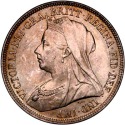
Coins of the Canon – The Money of Late Victorian England (2008)
Queen Victoria ruled Great Britain from 1837 until her death in 1901. During the 64 years of her reign, Britain turned to the remote parts of the world and established a colonial empire of such extent and prosperity that the world has never seen its like. Over the years of her reign, the bust of Victoria on the coinage of the United Kingdom had changed as the Queen matured. The profile of Victoria as a young girl appeared shortly after her coronation. Then, beginning in 1847, a “Gothic” version of Victoria appeared, with the heavy crown of England placed over her youthful braids. The bronze coinage of 1860 through 1895 displayed Victoria with her hair styled differently and was known as the “bun head” issue. A more middle-aged likeness for her highly celebrated Golden Jubilee followed nearly a half century later. It was in in 1893 however, when a distinctly matronly representation of the Queen was placed on all coin of the realm. It is this design that many professional numismatists consider to be the most striking design of a monarch ever to grace a British coin.
It was also during the latter years of Victoria’s reign that Sherlock Holmes and Dr. Watson made their “appearance” on 221B Baker Street. To a small extent, it was their dealing with the coinage of Victorian England that made them a little more real, a little more human, a little more legendary.
What follows is a detailed description of each of the standard coins in circulation during the time of Victoria, as well as a reference to their appearance throughout the Canon.
————–
Sovereign
This was the standard gold coin used throughout the British Empire, and was struck between 1893 and 1901 at the mints in London, Sydney, Melbourne and Perth. The obverse displays the bust of Victoria surrounded by the Latin legend “VICTORIA-DEI-GRA-BRITT-REGINA-FID-DEF-IND-IMP”, which translates to “Victoria, By The Grace of God, Queen of Britain, Defender of the Faith, Empress of India”. On the reverse, the mythical St. George on horseback is slaying a dragon.
The Sovereign was also known as a Pound, and was valued at 20 shillings. (Eleven centuries earlier, a “Pound” was equivalent to a pound of silver.) By comparison, a “Guinea” was a sovereign and a shilling, or 21 shillings.
In The Priory School, Holmes offers the antagonist Reuben Hayes a sovereign for the use of a bicycle. In a life-and-death struggle to open a coffin in time, Holmes provides an added incentive of a sovereign if the “lid comes off in a minute” in The Disappearance of Lady Frances Carfax. In The Greek Interpreter, Mr. Melas, the concerned interpreter is paid five sovereigns for his silence. The red-headed Jabez Wilson is paid four sovereigns weekly for his duties to The Red-Headed League, while in The Blue Carbuncle, a wager of a sovereign is paid by Holmes to a goose wholesaler for some “priceless” information.
Half Sovereign
The Half-sovereign is virtually identical to the sovereign in design and mintage. The value was 10 shillings (120 pence), as you might expect.
While interviewing solicited harpooners in search of a murderer in Black Peter, Holmes gives a half-sovereign to those interviewees he doesn’t suspect “for their trouble.” In a rush to get to the church for her immediate marriage, Irene Adler offers the coachman half a sovereign for her speedy delivery in A Scandal in Bohemia. Holmes taunts first-hand information from the off-duty constable, John Rance for a half-sovereign in A Study in Scarlet, and in The Sign of Four, Holmes rents the gifted mongrel Toby for a half-sovereign. Information is again purchased for a half-sovereign from cab driver 2704 in The Hound of the Baskervilles.
Crown
The Crown is considered to be the most desirable, majestic member of the series.
Minted between 1893 and 1900 in 92.5% pure (known as Sterling) silver , its value was equivalent to five shillings (60 pence). Here, the view of an elderly Queen, dressed in black in perpetual mourning for her deceased husband over three decades past is more finely engraved. The inscription is the same as above, as is the reverse design, which, by the way was executed by Master Engraver Benedetto Pistrucci and first appeared on the coinage of 1817.
The Crown, being a rather large and heavy coin, was not in use as heavily as smaller denominations, hence the Canon excludes the mention of this piece.
Half Crown
The “Old Head” Half crown was minted between 1893 and 1901, and also contained Sterling Silver. It was valued at two shillings and sixpence, or 30 pence. Surrounding the bust of Victoria are the Latin terms “VICTORIA-DEI-GRA-BRITT-REG”, which means “Victoria, By the Grace of God, Queen of Britain”. The ornate reverse displays the Royal Shield, encircled by “FID-DEF-IND-IMP” (Defender of the Faith, Empress of India) and the words HALF CROWN, separated by the date the coin was struck.
The Half crown appears in several stories in the series. In The Dying Detective, Holmes was severely disappointed with Watson that he carried too few half-crowns, prompting the good doctor to consider him mad. An offer by Holmes of a half-crown tip is momentarily declined by Dawson, a groom for Silas Brown in The Silver Blaze. In A Scandal in Bohemia, Holmes estimation of the value of the stationery upon which an important message was scribed at “not under half a crown per packet” leads him to the correct assumption that it was from Bohemia. Holmes rented a “dog-cart” for half a crown to travel with Watson to The Cedars in The Man with the Twisted Lip. Finally, in The Engineer’s Thumb, Inspector Bradstreet discussed with Holmes the gang of counterfeiters who’ ve been “turning out half crowns by the thousand”.
Florin
Mintage dates were identical to that of the Half crown, and its value was slightly less – two shillings (24 pence). The legend on the obverse was the same as on the Crown. The reverse, however, displays three shields (England, Scotland, Ireland) encircled by HONI – SOIT – QUI – MAL – Y – PENSE. This in turn is flanked by the words ONE-FLORIN and TWO SHILLINGS, with the date below.
The Florin or Two Shillings appears only once in the series, in The Crooked Man, where a small clue is uncovered by Holmes when he recognizes what appears to be a bad florin in the deposit of the Crooked Man’s landlady as an Indian rupee.
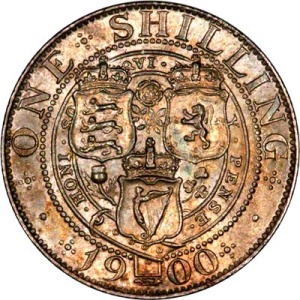 Shilling
Shilling
The shilling was one of the more common types used in circulation, and possessed the same basic design features as the florin. The shilling was valued at 12 pence, and was abbreviated as an ‘s’ (Latin for solidus, a Roman valuation).
The shilling is mentioned frequently throughout the Canon, the most familiar being from The Sign of Four, in which Holmes pays a shilling to each member of the Baker Street Irregulars as daily wages for searching out Morticai Smith’s steamer, the Aurora. In A Study in Scarlet, Dr. Watson’s monthly stipend is eleven shillings and sixpence. The value of the small busts of Napoleon in The Six Napoleons was no more than a few shillings, while as mentioned in The Cardboard Box, the Stradivarius Holmes occasionally plays was bought for measly 55 shillings. For six shillings, a disguised Holmes bought a pair of incriminating cast-off shoes to match to footprints in The Beryl Coronet. Finally, from The Hound of the Baskervilles, Holmes gives Cartwright 56 shillings to give to porters at various Charing Cross Hotels to gain permission to search their waste for an important page from a newspaper.
Sixpence
The sixpence, like most from the “Old Head” series, was minted between 1893 and 1901.
The sole mention of the value of sixpence in the Canon can be found in The Sign of Four, where Holmes’ assessment of the envelope used in a letter to Mary Morstan to be sixpence a packet, “the best quality paper”.
Penny
As with all bronze coinage of the Victorian “Old Head’ design, the penny, or pence was minted from 1895 to 1901, and displays the standard obverse as other denominations in this type. The reverse, however, presents us with a seated Britannia, the beloved symbol of Great Britain, not unlike Miss Liberty to the United States.
References to the penny are not found in the series, but in Lady Frances Carfax, a mention of two pence appears regarding the price per word for a telegram. Holmes also receives two pence as partial payment for “rubbing down the horses” while disguised as a common man in A Scandal in Bohemia. Twopence also is the fee paid for a typewritten page to Miss Sutherland in A Case of Identity.
(Comment from Editor: In The Man with the Twisted Lip, Neville St. Clair’s coat pockets were stuffed with pennies and halfpennies.)
Half Penny
The half penny was identical in design and composition to the penny.
I was unable to find a reference to this denomination in the Sherlock Holmes series.
(Comment from Editor: In The Man with the Twisted Lip, Neville St. Clair’s coat pockets were stuffed with pennies and halfpennies.)
Farthing
The farthing is equivalent to a quarter pence, and as mentioned above, was struck between 1895 and 1901. (The name “farthing” comes from the term “fourthing”, or dividing into fourths.)
Unfortunately, no reference to the value of a farthing is mentioned within the Canon.
Photography courtesy of the Standard Catalog of World Coins, Krause Publications, Iola, Wis.References: Standard Catalog of World Coins – Krause/Mishler; Coins of England and the United Kingdom – Seaby.
Dennis Nowicki has lived an adventure throughout his varied professional and social career. He was a well-traveled, professional singer before reaching puberty, then a numismatist and award-winning plastic modeler from his late teens. Dennis has been a published author, experienced skydiver, scuba diver, decorated Air Force Non-Commissioned Officer, professional numismatist, corporate manager, electronics technician with a Top Secret clearance, gifted web designer, actor, artist, popular English teacher for corporate Japan, certified real estate appraiser, and is fluent in spoken Japanese. He holds a Bachelors degree in Business from the University of Redlands and a certified middle school teaching certificate through Texas A&M University.
This article originally appeared in Studium magazine and is reprinted with the permission of the author, who has copyrighted this article. Be sure to check out the entire issue devoted to Sherlock Holmes, including an interview with our own 13th Garrideb, Peter E. Blau.

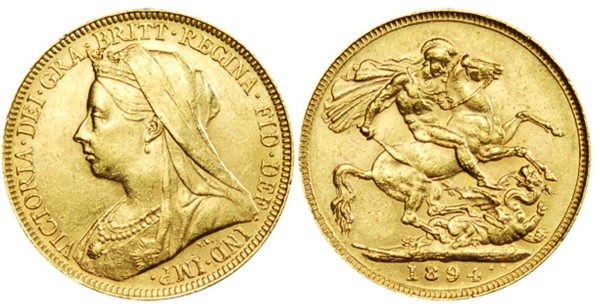

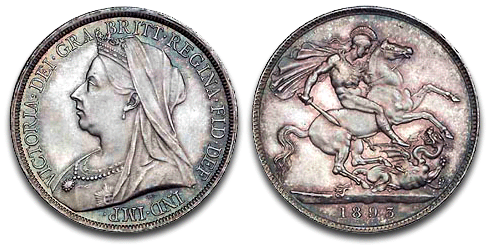
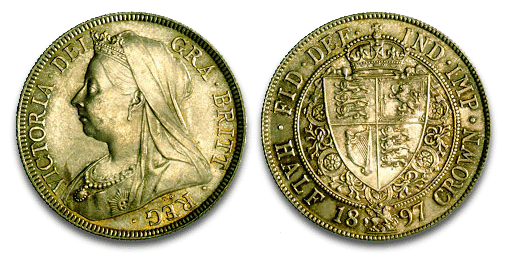
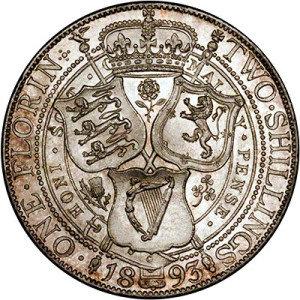
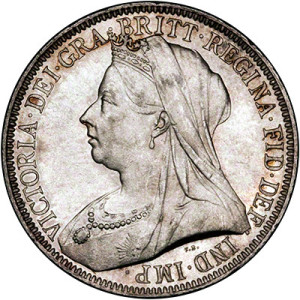
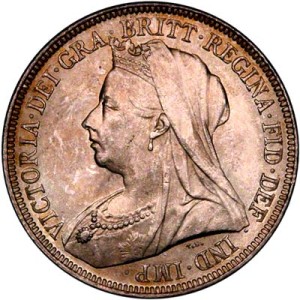
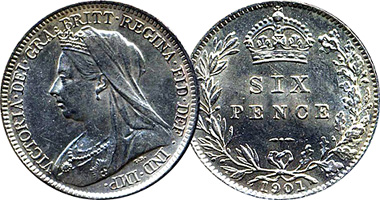
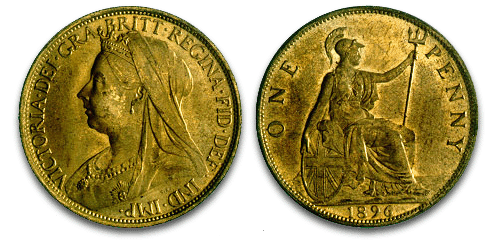
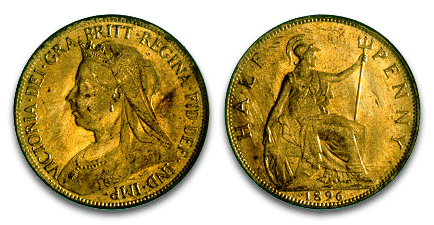
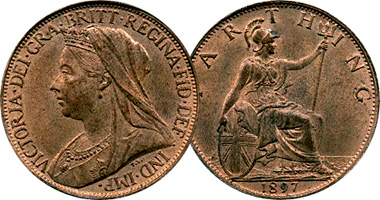
Hello everyone from the Old Country. Interesting piece on the coinage of the late-Victorian era. The pound coin was known as a ‘Sovereign’ because it was introduced by King Henry VIII during the sixteenth century. He it was who received the accolade ‘Defender of the Faith’ from the Pope because of his book ‘Assertio Septum Scramentorium’ a refutation of the theology of Martin Luther. Really it has not applied to Kings & Queens since the breach with Rome, and should have been dropped. Queen Elizabeth II is Supreme Head of the Church of England which denies several Roman Catholic theological stances – could only happen in England this odd situation! The Crown was known as Five Bob, the Florin, an attempt to decimalise sterling which was discontinued, was known as Two Bob, a sixpence piece was pronounced ‘sixpunce’ and known as a Tanner, a half-penny was pronounced ‘hape-ni’. Hope this is not too confusing. I believe there were coins valued at a third of a penny, a double sovereign, and five sovereigns used in Victoria’s reign. Previously there had been a fourpenny coin known as a Groat, which had been discontinued. If anyone is on Skype you will find me there, give me a call and we can have a chat if you care to. Best wishes to all my American cousins…. Roger
Further to the above, I have omitted that the shilling coin was known as a ‘Bob’, the half-crown (2/6d) was known as ‘Two and a Kick’, and the half-guinea (10/6d) was known as ‘Ten and a Kick’.
All these colloquialisms had disappeared from British English, except for those of us of a certain age who were brought up before decimalisation in the 1970s. Be thankful that your currency has remained the same since it was inaugurated. I still find myself converting prices into £sd and then saying, ‘what eight shillings and sixpence for a Mars Bar’
Everyone, I was idly surfing the web and stumbled across this site and thought you may find it interesting.
http://www.therpf.com/f9/sherlock-holmes-granada-brett-props-77333/
By the way my Skype name is Roger.Kilshaw. Tomorrow morning I am jetting off to Lanzarotte for a fortnights holiday so you won’t hear from me till after then.
[…] of our first posts was Dennis Nowicki’s excellent Coinage of The Canon, which featured a review of Queen Victoria’s coinage mentioned in the original Sherlock […]
While the Sovereign and half Sovereign were minted almost annually throughout Victoria’s reign, the 2 Sovereign piece was minted only in 1887 (now worth 700 Pounds) and in 1893 (now worth 800 Pounds) The 5 Sovereign piece was minted only 3 times. In 1839 (proofs only … if you can find one under 80,000 Pounds, good luck!) It is famous as “Una and the Lion” and is is one of the most beautiful of all English coins. Also minted in 1887 (now worth 1500 pounds) and in 1893 (now worth 2000 pounds). Values are the minimums.
FYI:
The 300 pounds in gold, given to Holmes as part of his retainer by the “King of Bohemia” would have weighed in at approximately 5 pounds, 4-1/4 ounces (avdp.), plus the weight of the purse.
And the Farthing IS mentioned, in the Beryl Coronet. Alexander Holder’s son, Arthur, asked him for another 200 pounds, presumably for gambling debts. His father replied: “You shall not have a farthing from me!”.
Also minted, at various times between 1839 and 1868, during Victoria’s reign, were the strange denominations of 1/2, 1/3 and 1/4 Farthings! The 1/3 farthing was for use in Malta; the 1/4 farthing for use in Ceylon. The 1/3 was minted only in 1844.